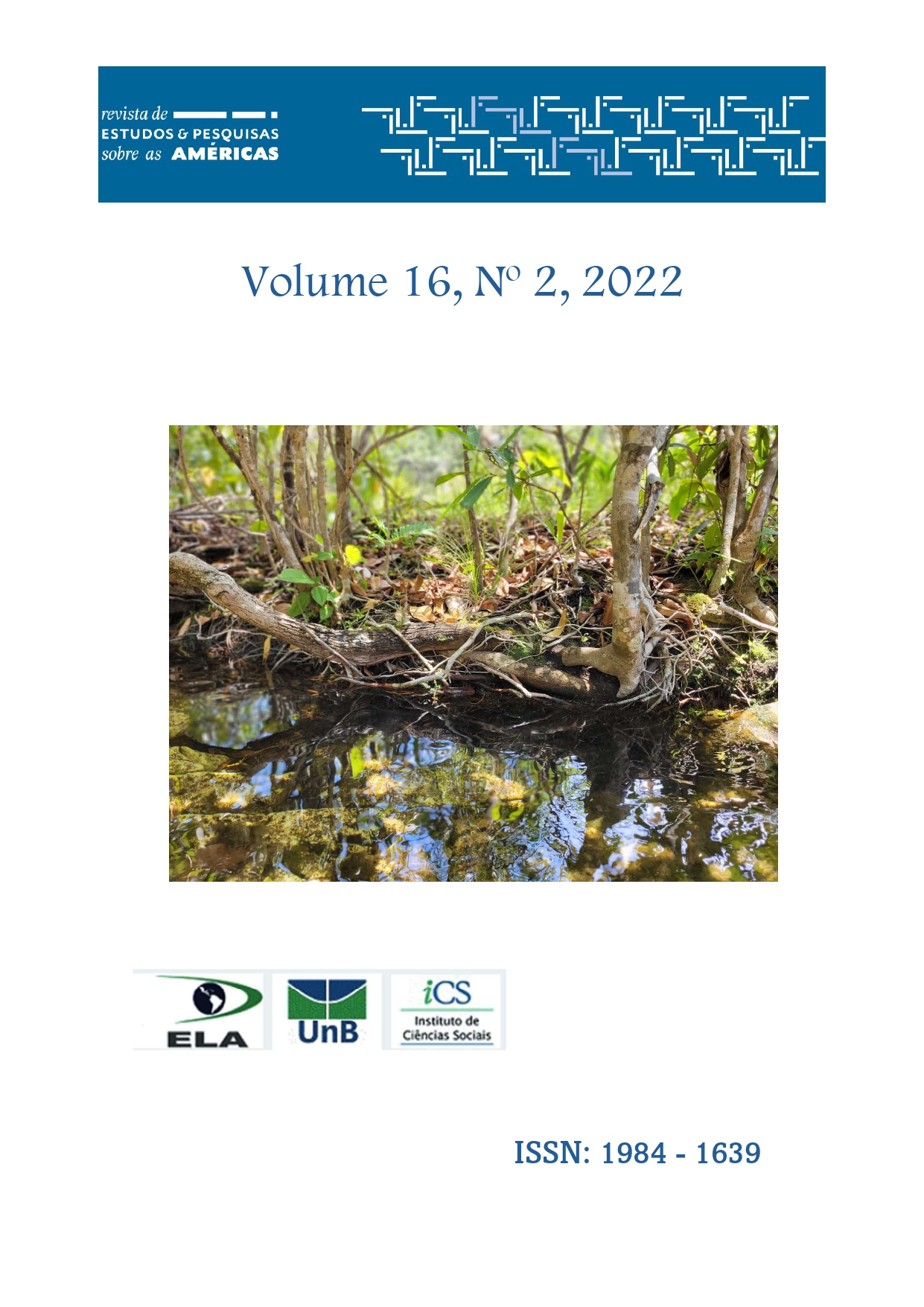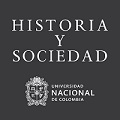Games of Power in the fight Against Extractivism in the South of Orinoco, Venezuela
DOI:
https://doi.org/10.21057/10.21057/repamv16n2.2022.49299Keywords:
power dynamics; extractivism; intercultural negotiation; indigenous resistanceAbstract
Transformation is in fashion in this climate of global environmental crisis. We are increasingly aware that if we want to guarantee the life of human beings and other species on the Planet, our way of life and the development model must change, and quickly. In this paper we focus on citizen led transformations by examining the role that socio-environmental conflicts and resistance struggles against extractivism play in the necessary socio-ecological transformation. We focus on a case study in Venezuela: the construction of a high-voltage power line between 1997 and 2000 to export electricity to Brazil, which had its epicenter in the Canaima National Park (PNC) and ancestral territory of the Pemon people and marked the beginning of the fight against the advance of mining in this area. We use an analytical framework focused on power to understand the successes and failures of the various resistance strategies carried out by the indigenous Pemon people, through the most dissimilar forms of intercultural negotiation with the Venezuelan State, to confront an era of neo-colonialism in their territories. We demonstrate that despite important changes in the political, legal and regulatory frameworks resulting from Pemon resistance struggles that give greater recognition to the rights of indigenous peoples, the Venezuelan State has ended up using the transformative power of conflicts to advance an aggressive extractivist agenda that threatens the physical and cultural survival of the Pemon and other indigenous peoples in the South of the Orinoco.
Downloads
References
ARVELO DE JIMÉNEZ, Nelly, COPPENS, Walter, LIZARRALDE, Rafael and HEINEN, Dieter. 1977. Indian policy in MARTZ, John D. and David J. MYERS, eds. Venezuela. The Democratic Experience, Praeger Publishers, New York.
AUDUBON. 1998. Análisis de impactos ambientales, sociopolíticos y económicos del tendido eléctrico a Brasil. Sociedad Conservacionista AUBUDON de Venezuela, Septiembre, 1998,Caracas.
BARRETO, A. and PEREZ, S.. 1991. Estudio integral de la actividad minera en la Cuenca Alta del Río Caroní. Segunda Jornada de Profesionales de EDELCA. EDELCA, 1991, Puerto Ordaz, Venezuela.
BELLO, Luis J. 1999. Los derechos de los pueblos indígenas en Venezuela. Grupo Internacional de Trabajo sobre Asuntos Indígenas (IWGIA) & Forest People Programme (FPP), Copenhaguen.
BEVILACQUA, María Pía, MEDINA, Domingo y CARDENAS, Lia. 2009. Manejo de Recursos Naturales en el Parque Nacional Canaima: desafíos institucionales para la conservación. In SEÑARIS, Celsa, LEW, Daniel and LASSO, Carlos (eds) (2009) Biodiversidad del Parque Nacional Canaima: Bases Tecnicas para la Conservacion de la Guayana Venezolana. Caracas: La Salle Natural Science Foundation and The Nature Conservancy.
BUTT-COLSON, Audrey. 2009. Land. Its Occupation, Management, Use and Conceptualization. The Case of the Akawaio and Arekuna of the Upper Mazaruni District, Guyana. Somerset, UK: Last Refuge Publishing.
CABALLERO, Hortensia. 2007 La demarcación de tierras indígenas en Venezuela, Revista Venezolana de Economía y Ciencias Sociales, 13(3), pp. 189–208.
CABALLERO-ARIAS, Hortensia. 2017. «Entre los marcos jurídicos y las cartografías indígenas», Revue d’ethnoécologie [En ligne], 9 | 2016, mis en ligne le 01 juillet 2016, consulté le 27 mars 2017. URL : http://ethnoecologie.revues.org/2633 ; DOI : 10.4000/ethnoecologie.2633
CONIVE. 1999. Los Pueblos Indígenas y el Proceso Constituyente. Consejo Nacional Indio de Venezuela, 21 al 25 de Marzo de 1999, Ciudad Bolívar, Venezuela.
COLCHESTER, Marcus. and WATSON, Fiona. 1995. Venezuela: violaciones de los derechos indígenas. Informe para la OIT sobre la observación del Convenio de la OIT. World Rainforest Movement, Septiembre de 1995,Chadlington, Reino Unido.
EBUS, Bram. 2019a. Venezuela's mining arc: a legal veneer for armed groups to plunder. The Guardian, 8 Junio 2019. Disponible en linea: https://www.theguardian.com/world/2019/jun/08/venezuela-gold-mines-rival-armed-groups-gangs
EBUS, Bram. 2019b. Venezuela, el paraíso para los contrabanditas. Human Rights Foundation/Dutch Fud for Journalism Projects. Disponible en línea: https://smugglersparadise.infoamazonia.org/about
HERNÁNDEZ, Clodovaldo. 2006. Argentina, Brasil y Venezuela sientan las bases del gasoducto transamazónico. El País, 04 Marzo 2006. Disponible en línea: https://elpais.com/diario/2006/03/05/internacional/1141513216_850215.html
INNA PEMONTON. 1997. Declaración de los pueblos indígenas de "La Gran Sabana". Unpublished, 28 de Junio de 1997, Caracas.
INFORECO, C. 1997. Estudio de Impacto Ambiental Linea Electrica Pto Ordaz-Manus. INFORECO, 1997, Puerto Ordaz, Venezuela.
MANSUTTI, Alexander. 2006. La demarcación de territorios indígenas en Venezuela: Algunas condiciones de funcionamiento y el rol de los antropólogos, Antropologíca, (105–106), pp. 13–39
MARNR. 2000. Primer informe de Venezuela sobre Diversidad Biológica. Oficina Nacional de Diversidad Biológica, Ministerio del Ambiente y de los Recursos Naturales, Caracas, Venezuela.
MCT. 2007. Presentados el Satélite Simón Bolívar y la Misión Ciencia a los indígenas pemón en La Gran Sabana. Nota de Prensa del Ministerio de Ciencia y Tecnologia. Venezuela. Disponible en linea. 06 de Julio, 2007. http://www.mct.gob.ve/publico/noticias/det_noticias.php?co=1057
MIRANDA, Marta, BLANCO-URIBE, Alberto, HERNÁNDEZ, Lionel, OCHOA, José and YERENA, Edgar. 1998. All that glitters is not gold. Balancing conservation and development in Venezuela's frontier forests. World Resources Institute, Washington DC.
MPPPI 2007- Dan a conocer alcances del Satélite Simón Bolívar a indígenas Pemones Prensa MPPPI - www.aporrea.org 27/07/07 - www.aporrea.org/actualidad/n98608.html
NOVO, Isabel y DÍAZ, Diego. 2007. Final Report on the Evaluation of the Canaima National Park, Venezuela, as a Natural Heritage of Humankind Site. Project on Improving Our Heritage. Vitalis, Caracas.
PERERA, M. 1995. El desarrollo sustentable: base de nuevos males o posibilidad real de crecimiento etnoeconómico in Carrillo, A. and M. Perera, eds. Amazonas, modernidad en transición: contribuciones al desarrollo sustentable en el Estado Amazonas, Venezuela,SADA-Amazonas/CAIAH/MARNR, Caracas.
PILGRIM, Sarah. AND PRETTY, Jules, editors. 2013. Nature and culture. Rebuilding Lost Connections. Earthscan.
PIZARRO, Italo. 2006. El Plan de Vida del Pueblo Pemón. In J. Medina and A. Vladimir (eds) (2006) Conservación de la Biodiversidad en los Territorios Indígenas Pemón de Venezuela: una Construcción de Futuro. Caracas: The Nature Conservancy.
RODRÍGUEZ, Iokiñe. 2014. Canaima National Park and World Heritage Site: Spirit of Evil? In DISKO, Stefan and TUNGENDHAT, Helen (Eds) World Heritage Sites and Indigenous Peoples' Rights. IWGIA, Forest Peoples Programme and Gundjeihmi Aboriginal Corporation. Copenhagen, Denmark.
RINCÓN, Ivonne. 2006. Comunidades indígenas advierten impacto ambiental del gasoducto. Correo del Caroní, 08.03.06, pág. 4-2.
RORAIMÖKOK DAMÜK. 2010. La Historia de los Pemón de Kumarakapay. In RODRÍGUEZ, Iokiñe, GÓMEZ, Juvencio y FERNÁNDEZ, Yraida (eds). Caracas: Ediciones IVIC.
TEMPER, Leah, WALTER, Mariana, RODRIGUEZ, Iokiñe, KOTHARI, Ahish and TURHAM, Ethemcan. 2018. A perspective on radical transformations to sustainability: resistance, movement and alternatives. Sustain Sci (2018). https://doi.org/10.1007/s11625-018-0543-8
TORO HARDY, Antonio.1997. La interconexión electrica con Brasil. El Globo. 03 de Febrero de 1997, Caracas
VITTI, Minerva. 2016. Minería, sindicatos y Arco Minero del Orinoco, combinación mortal para los indígenas del Caura. Correo del Caroni, viernes, 12 agosto 2016. Disponible en línea: ww.correodelcaroni.com/index.php/mas/ambiente/item/48295-arco-minero
WORLD BANK. 2006. Annex 20. Project brief on a proposed grant from the Global Environment Facility Trust fund in the amount of USD 6 million to the government of Venezuela for a Venezuela-expanding partnerships for the National Parks System Project. World Bank, May 2006
Downloads
Published
How to Cite
Issue
Section
License
Copyright (c) 2024 Iokiñe Rodríguez, Vladimir Aguilar Castro

This work is licensed under a Creative Commons Attribution-NonCommercial 4.0 International License.
The published material is the property of the Journal, and may be reproduced in whole or in part with indication of the source.
Copyright: Authors will be responsible for obtaining the copyright of the material used. Authors who publish in this journal agree to the following terms:
a)Authors retain the copyright and grant the journal the right of first publication, with the work simultaneously licensed under
the Creative Commons Attribution License which allows the sharing of work with acknowledgment of authorship and initial publication in this journal.
b) Authors are authorized to take additional contracts separately, for non-exclusive distribution of the version of the work published in this journal (eg, publish in institutional repository or as a book chapter), with acknowledgment of authorship and initial publication in this journal.
c) Authors are allowed and encouraged to publish and distribute their work online (eg in institutional repositories or on their personal page) at any point before or during the editorial process, as this can generate productive changes as well as increase the impact and the citation of the published work (See The Effect of Free Access).
















